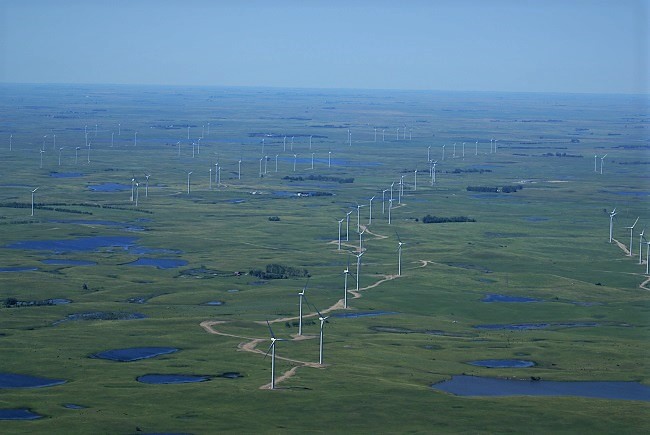Given the federal administration’s current focus on tackling the climate crisis through development of clean energy technology instead of high-carbon investments, the number of new wind and solar facilities across the Prairie Pothole Region is likely to increase in the near future. However, these types of facilities have large land footprints, and information about potential adverse impacts to grassland bird and waterfowl habitat is being sought by state and federal agencies. A melding of models and tools developed through a decades-long collaboration between the USGS Northern Prairie Wildlife Research Center and the USFWS Habitat and Population Evaluation Team (HAPET) is addressing contemporary issues while highlighting the value of such long-term partnerships.
In a 2016 Conservation Biology paper, Jill Shaffer and Deb Buhl (both USGS) reported that seven species of grassland birds exhibited behavioral avoidance of wind turbines. Chuck Loesch (HAPET), other USFWS partners, and DU collaborators reported in a 2013 Journal of Wildlife Management paper that five species of dabbling ducks also exhibited behavioral avoidance of wind facilities. By quantifying grassland bird and waterfowl displacement rates from these studies, the three researchers developed the Avian-Impact Offset Method (AIOM) to quantify and compensate for the loss in value of breeding habitat from development.
Presented in a 2019 Ecological Applications paper, AIOM is a science-based tool that converts the biological value (that is, avian density) lost by development and estimates the acres of grasslands and number of wetlands needed to compensate for displaced pairs of grassland birds and waterfowl. By converting biological value to traditional units of measure in which land is described and purchased or sold, the AIOM lends itself readily to the delivery of offsetting measures such as easement protections and restoration projects. And, although we used wind development in the paper, the AIOM is also applicable to other human disturbances including solar, oil, gas, and transportation infrastructure.
Drawing upon waterfowl models first developed by teams headed by Terry Shaffer (USGS) and Ron Reynolds (HAPET) and grassland bird models developed by teams headed by Neal Niemuth (HAPET), Chuck Loesch was able to further develop Decision Support Tools (DST) that automate the AIOM and enable users to locate suitable offset sites on the Northern Great Plains landscape. Although data provided with the tool are currently limited in geographical extent and only apply to migratory birds, the DST can be expanded to other geographies and species as additional information becomes available. A tutorial explaining the field methodologies of the studies, the calculation of displacement rates, and the proper application of the AIOM and the DST is forthcoming in a USGS Open-File Report. To date, and to the extent that the authors are aware, the AIOM has resulted in voluntary offset packages for several wind-development projects in North Dakota involving the restoration of an estimated 937 grassland-acres and 392 wetland-acres; an offset package from an additional development provided funds to secure offsets.

